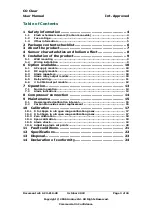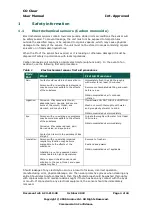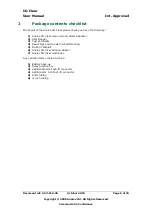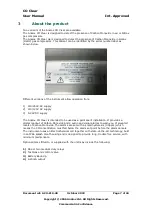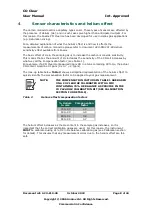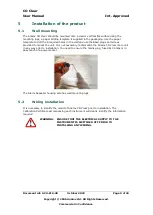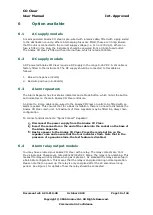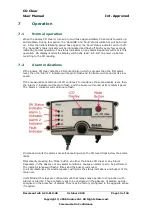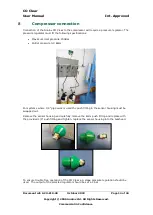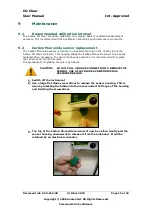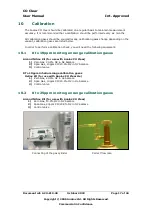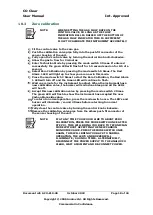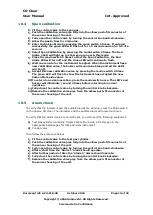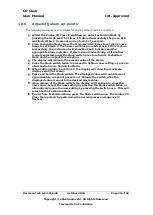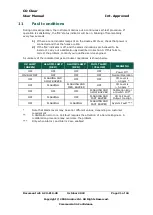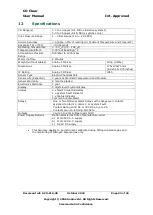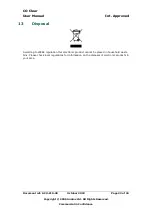
CO Clear
User Manual
Int. Approved
Document ref: ACO-810-28
October 2018
Page 8 of 24
Copyright © 2006 Analox Ltd. All Rights Reserved.
Commercial in Confidence
4
Sensor characteristics and helium effect
The carbon monoxide cell is a capillary type sensor. These types of sensors are affected by
the presence of Helium (He), and in such cases give higher than anticipated outputs. For
this reason, the Analox CO
Clear He
has been developed for use in Heliox gas applications
(e.g. Saturation diving).
For a detailed explanation of what the helium effect is and how it affects the
measurements of carbon monoxide please refer to document
ACO-MISC01-00 Helium
sensitivity effect
available from Analox.
The basic effect of He in the sample gas is to increase the carbon monoxide sensitivity.
This means that as the amount of He increases the sensitivity of the CO cell increases by
what we call the ‘compensation factor’
(see Table 1).
For example, if a CO
Clear He
measured 3ppm CO in a tank containing 99% He, the actual
CO content would be 2.1ppm (3 x 0.7 = 2.1ppm).
The look-up table below
shows a simplified representation of the helium effect to
quickly identify the compensation factor to be applied to your gas measurement.
NOTE:
THE COMPENSATION FACTORS IN TABLE 1 ARE BASED
ON A CO
CLEAR HE
CALIBRATED WITH A MIX
CONTAINING 79% HE BALANCE AS PROVIDE IN THE
CO
CLEAR HE
CALIBRATION KIT (SEE CALIBRATION
SECTION FOR DETAILS).
Table 3
Helium effect compensation factors
% Helium
in mix
Compensation
factor
79 to 83
1.0
83 to 89
0.9
89 to 94
0.8
94 to 99
0.7
The helium effect increases as the He content in the sample gas increases, so it is
important that the correct calibration gases are used. For this reason, the instrument
MUST
be calibrated using 21% O2 in He balance calibration gas (see Calibration section
for details). This ensures that any measurement errors due to the helium effect are fail-
safe.
Summary of Contents for CO Clear
Page 2: ......



